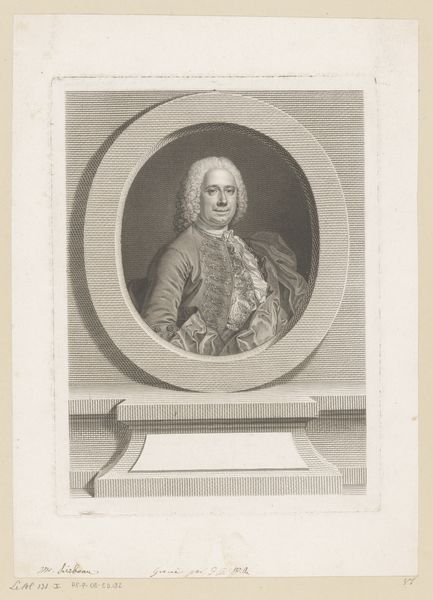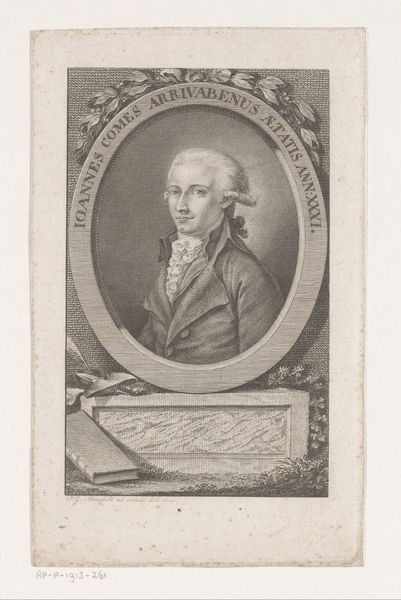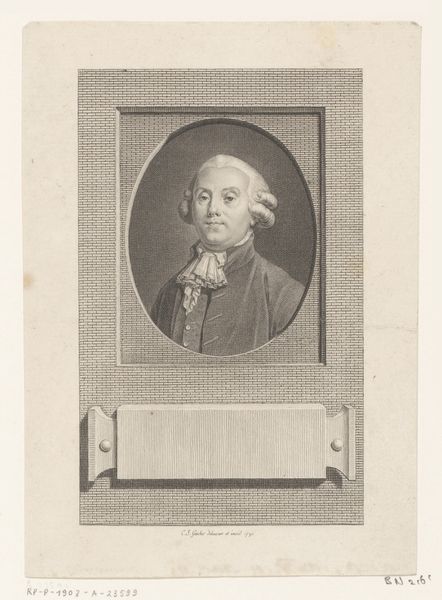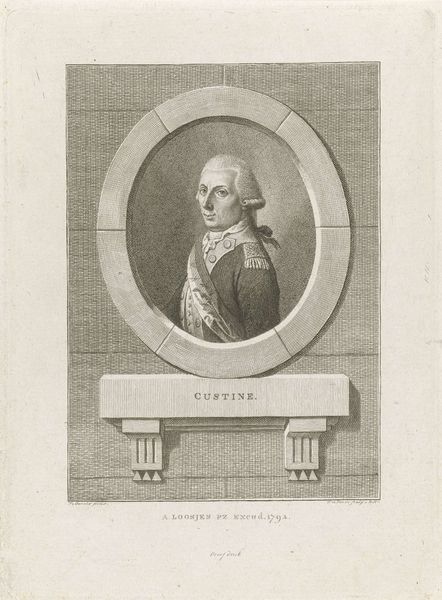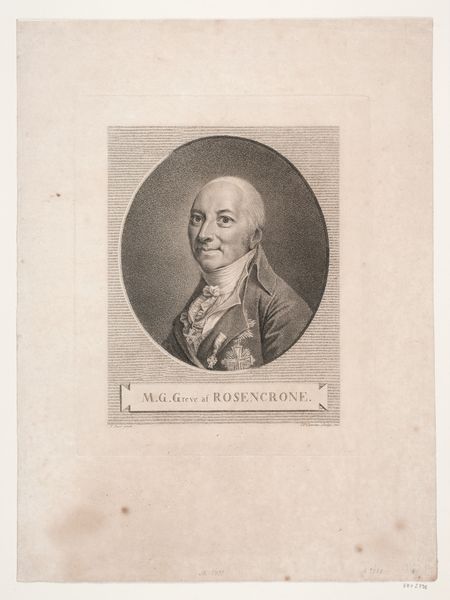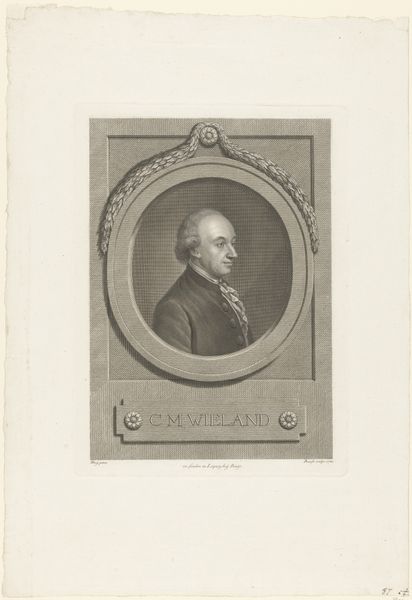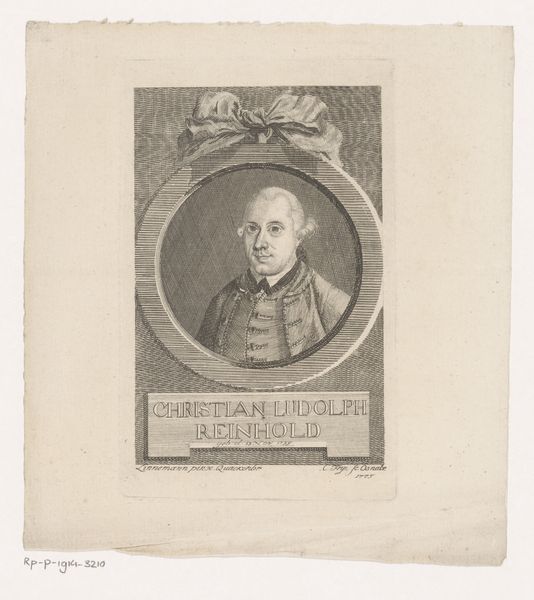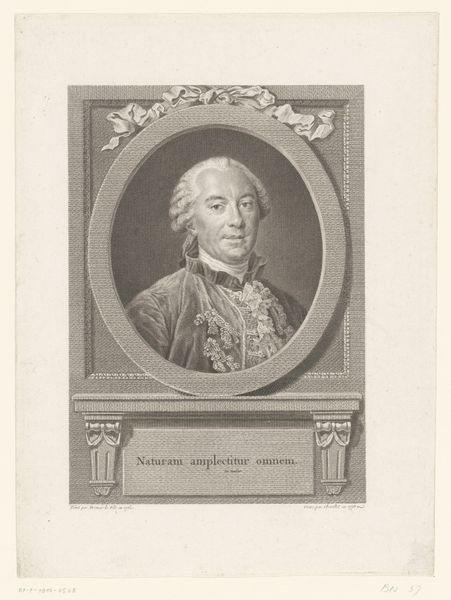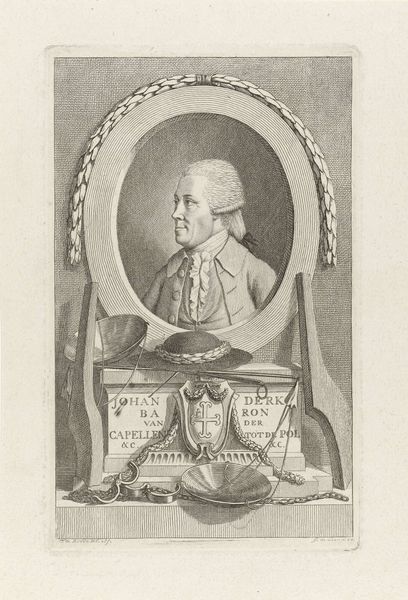
print, engraving
#
portrait
#
baroque
# print
#
old engraving style
#
history-painting
#
engraving
Dimensions: height 246 mm, width 184 mm
Copyright: Rijks Museum: Open Domain
Curator: Here we have Johann Georg Wille’s 1752 engraving, “Portrait of Charles, Comte d’Aumale,” now held at the Rijksmuseum. Editor: It strikes me as a rather austere depiction, almost entirely grayscale. The comte’s presentation is rigid, framed within that imposing oval, all these straight lines… Curator: And what do you make of the lines themselves, literally? Note the incredible precision of the engraving technique. Wille was celebrated for it. Look closely; you can see how he built up shadow and texture with minute variations in the engraved lines. Editor: Exactly! It’s a labor-intensive process. Each line is physically carved into the copperplate, and then inked. The sheer manual skill, the planning, the conscious decision-making...it is incredible, particularly compared to today's printmaking methods. I can’t help but wonder about the workshop conditions and the economics that underpinned this kind of production. Who was exploited? Who benefited? Curator: That focus on the material conditions adds another layer to understanding images of power. Consider the Comte's armour and the rich fabric draped over his shoulders. These aren’t mere decorations, are they? They represent authority, status, and lineage, encoded and understood through material signs of aristocracy. This "armor," while visually weighty, is interesting; it implies he is ready for battle, suggesting an ideal of leadership rooted in military prowess. Editor: Precisely! And that elaborate frame around the portrait…even that mimics the stone carvings on aristocratic houses, echoing claims of dominance in a highly controlled manner. Look, everything is staged: labor is hidden behind claims of aristocratic prowess! The entire process of production reinforces existing social hierarchies. Curator: Perhaps it’s about a carefully constructed continuity, then: ancestry made tangible through craftsmanship and communicated visually. Even the portrait format, with its allusions to coins and medals, elevates the individual to an almost mythical status. Editor: Ultimately, the piece is a product of its time. It is through meticulous work, and in dialogue with its material constraints, a historical narrative gets embedded in the metal itself. Curator: Agreed; it reminds us to read images not only for who they represent but for how the image itself was produced and how that conditions what is seen and felt.
Comments
No comments
Be the first to comment and join the conversation on the ultimate creative platform.


